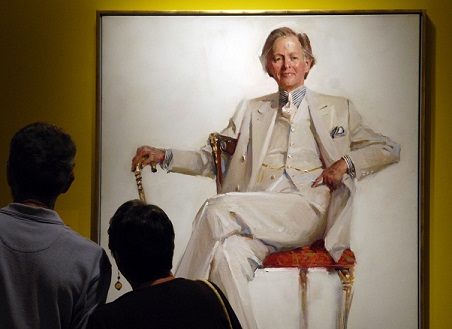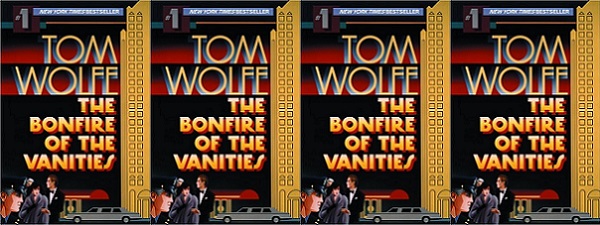Tom Wolfe‘s book The Bonfire of the Vanities offers a hard hitting, black comedy, satirical look at the power, money, influence, and race / ethnicity with Wall Street bond trader Sherman McCoy in the middle of decadence, depravity and the intersection that is Manhattan and the Bronx in New York City, New York.

The exploration of personal motivation underlies the true depth of the achievement that The Bonfire of the Vanities makes, as much of the true commentary offered through the book rests in Tom Wolfe‘s capacity for sharing the inner works of the characters in juxtaposition to the surface versions of one another that lives on the surface of things. That New York City, culturally, is placed under the microscope does for 1980’s America what F. Scott Fitzgerald‘s The Great Gatsby did with relation to America of the 1920’s. This is offered as high praise.

Esquire magazine extols Tom Wolfe novels The Bonfire of the Vanities, The Electric Kool-Aid Acid Test, The Right Stuff, Radical Chic & Mau-Mauing the Flak Catchers and The Painted Word as examples of the New Journalism movement of the 1960s and 1970s to offer journalism research with techniques of fiction writing to offer a robust telling of the subject matter presented. The notion is that there’s a fictionalized and narrative structure of real life and motivation.

The Bonfire of the Vanities offers caricatures, or stereotypes for characters, including WASP bond trader Sherman McCoy, aloof and estranged wife Judy McCoy, Jewish assistant district attorney Larry Kramer, media obsessed district attorney Abe Weiss, British expatriate and alcoholic journalist Peter Fallow, southern gold-digging mistress Maria Ruskin, Bronx youth and silent antagonist Henry Lamb, and Harlem religious political leader Reverend Bacon. That Wolfe has taken to looks beyond the surface of the stories of these and, in some respect other characters, takes the story that is told with significantly less punch in The Bonfire of the Vanities (1990) that followed three years later and adds depth that one loses when not getting the inside world of the characters.

(Different book covers for the Tom Wolfe book The Bonfire of the Vanities, as seen through time).
The Bonfire of the Vanities works as the first novel written by the author, which is to say that this book departs from the school of narrative nonfiction into fictionalized storytelling that was inspired by true events and composites of people with some made-up detail, or poetic license, to provide a compelling picture of the truth that Wolfe was aiming to share. Tommy Killian, for example, is reportedly based on New York City lawyer Edward Hayes. It is speculated here that Reverend Bacon is based on Al Sharpton and/or Jesse Jackson. That Wolfe offers a compelling tale viewed from multiple perspectives with depth offers the redeeming motivations of exceptional self-centeredness are present in the underlying story.

(Tom Wolfe wrote the 1987 book The Bonfire of the Vanities, whose underlying use as referenced harkens to a burning of objects condemned by religious authorities in Florence, Italy in 1497).
I found the book telling of The Bonfire of the Vanities much more gratifying than I did the movie telling, despite the high quality cast that contributed to the Brian De Palma film. It was in the depth and scope of the characters depicted that I found the experience of reading the book worthwhile. I give Tom Wolfe‘s The Bonfire of the Vanities 4.0-stars on a scale of 1-to-5.
Matt – Wednesday, August 18, 2021
